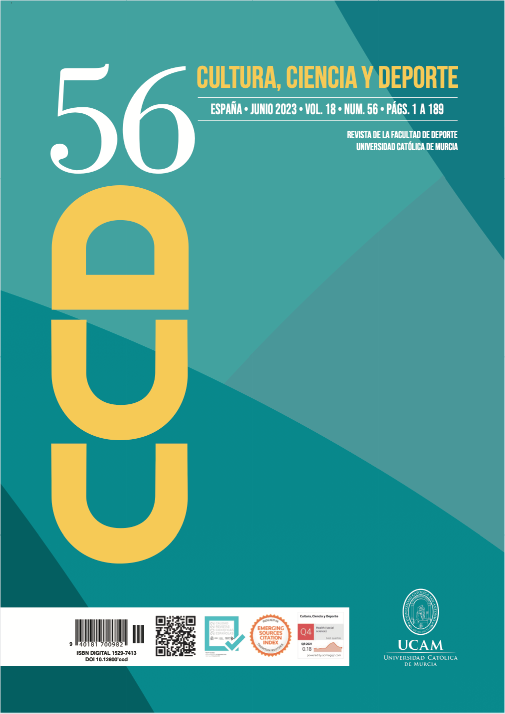Assessing fat mass from a body composition perspective: a critical review
DOI:
https://doi.org/10.12800/ccd.v18i56.2033Abstract
The estimation of fat mass and fat percentage has been used both in the field of health, due to its relationship
with various diseases; and in sport, due to its relationship with sports performance. However, the advantages and
disadvantages of the different methods of estimating body composition are rarely taken into consideration when
evaluating this parameter, including dual energy X-ray absorptiometry (DEXA or DXA); hydrodensitometry; air
displacement plestimography; electrical bioimpedance; anthropometry; 2D/3D/4D scanning and ultrasound, as well
as whether they are indirect or dual indirect methods. Nor do most studies and evaluations take into consideration
the different models from which body composition can be approached, with methods that use a chemical, molecular,
cellular, tissue or segmental approach, the most commonly used being the molecular and tissue models. All this leads
to the fact that the different methods can be used to estimate adipose mass, fat mass and lipid mass. Although
these concepts have been treated as synonyms, there are differences among them that are addressed in this article,
as well as what the different assessment methods estimate: lipid mass or adipose mass. It concludes with the practical
implications of all the above for fat mass estimation.
Published
How to Cite
Issue
Section
License
Copyright (c) 2023 Creative Commons Attribution License

This work is licensed under a Creative Commons Attribution-NonCommercial-ShareAlike 4.0 International License.
The authors who publish in this journal agree with the following terms:
- The authors retain the copyright and guarantee the journal the right to be the first publication of the work as well as licensed under a Creative Commons Attribution License that allows others to share the work with recognition of the authorship of the work and the initial publication in this journal.













